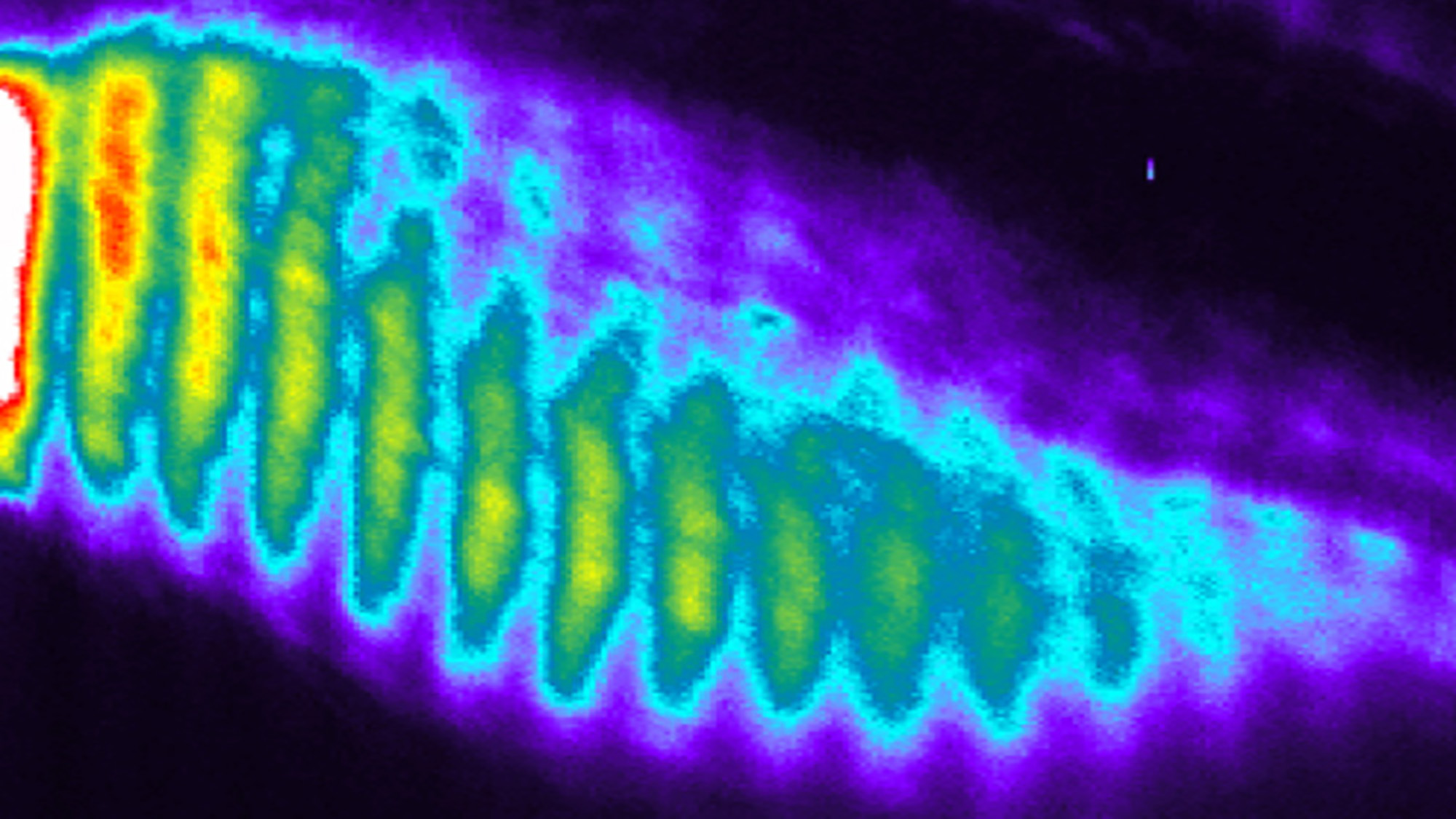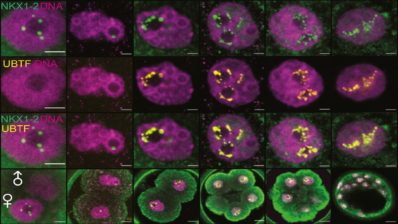Mitsuhiro Matsuda, first author of the paper led by Miki Ebisuya at European Molecular Biology Laboratory – Barcelona (EMBL Barcelona) has collaborated with colleagues in several Japanese institutions to recapitulate in vitro the genetic mechanism underlying the periodic structures of our vertebral column.
The expression of this group of genes, known as the segmentation clock, oscillates during embryonic development, with gene activity rising and falling in a regular pattern over time (see movie below). For each oscillation, a new somite – the predecessors of vertebrae and ribs – is formed. Errors in this segmentation clock can cause hereditary disorders of the vertebrae, such as the rare condition spondylocostal dysostosis (SCD).
The researchers created cell lines missing one of the genes known to cause SCD – HES7, DLL3 or LFNG – and saw that the genetic oscillations did not happen or did not properly coordinate across the tissue to form the usual travelling waves of gene activity. They then checked the same was true with real patient cells (with DLL3 mutated), and finally used the gene editing tool CRISPR–Cas9 to correct the patient’s mutation, proving that this mutation was responsible for the asynchronisation of the segmentation clock.
You can read more about this study at the EMBL’s website.
Matsuda M et al. Recapitulating the human segmentation clock with pluripotent stem cells. Nature, published 1 April 2020. DOI: 10.1038/s41586-020-2144-9.






